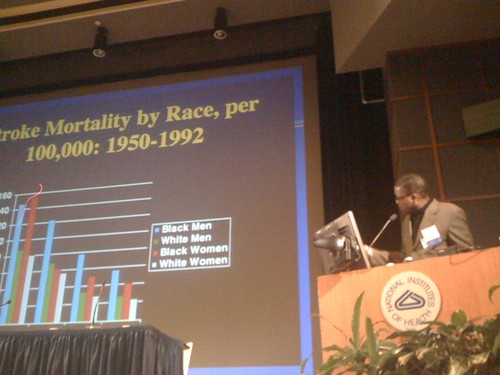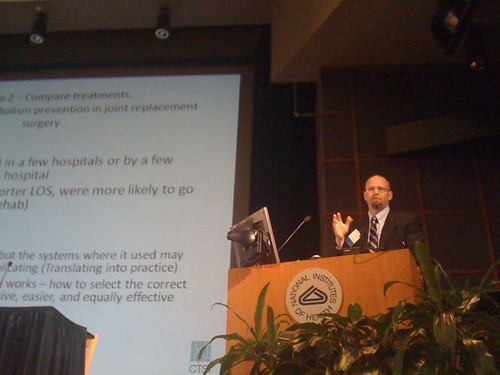
A symposium hosted by the National Center for Research Resources (NCRR). Louise Ramm, Deputy Director of NCRR provided framing challenges and welcome. Zak Kohane introduced use cases, sources of and reviewed the false dichotomy between health-record based research and clinical trials..
Gary Gibbons provided a perspective of disease in the African-American population as an exemplar of a complex orphan disease in the sense that like rare orphan diseases, it is understudied and insufficiently treated. He also pointed out how in many parts of the country underserved minorities are located away from the academic health centers that have made the most inroads in the use of electronic health records.. Therefore, institutions such as Morehouse School of Medicine have their work cut out for them (and not a lot of resources) to integrate data from a large number of only lightly affiliated practices. That same challenge presents an opportunity to be even more impactful in an orphan disease of epidemic quality. Professor Gibbons also urged a broadening of the captured context beyond what is conventionally captured in a standard (brief) healthcare visit. Environmental variables that are highly penetrant, much more so than many genomic markers are poorly captures. He concluded by reviewing the current compelling information about pharmacogenomic differences, and population genetic risks and also the wide holes in our knowledge of these as they pertain to various groups within the USA.
Andrew Auerbach from UCSF addressed comparative effectiness research and its translation into "Health system innovation research" Described how much can be done with charge data, and how additional codified data types (e.g. medications) can further improve the quality of that data. Closed with a discussion of how the various stakeholders in using EHR data for research (.e.g NIH, Payors, health systems leaders, physicians, and patients) might be well aligned or not. Put us on notice that IRB's are unfamiliar about distributed query systems and/or grids and this is becoming at last an obstacle for many CER studies. Summarized several use cases such as optimal length of treatment of pneumonia? Can a patient-focused discharge checklist reduce risk for readmission?

Robert Plenge described his use of i2b2 and electronic health records for genotypic research and discovery of endophenotypes.
John Brownstein reviewed non-traditional public health research using institutional data and non-traditional, non-institutional healthcare data extraction and analysis.
1 comment:
However, other research traditions seen the EHR as a contextualised artefact within a socio-technical system. That was very informative I really enjoyed reading this.
ehr software
Post a Comment